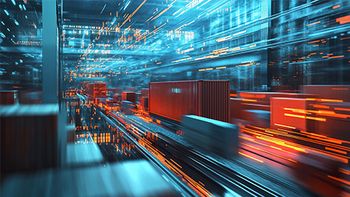
Rare disease patient support
Rare diseases are hard to treat; supporting the patient can be even more challenging
Diagnosing and treating a rare disease is difficult on a good day. Length of time to diagnosis (often more than five years), lack of therapies (there are effective therapies for less than five percent of 7,000 known rare diseases) and small patient populations all lead to significant challenges for the healthcare industry in rare disease management and support of these patient populations. Even more so than those suffering with common illnesses, rare disease patients are as unique as the disease with which they suffer, making patient support even more challenging. Not only do they require a more personalized approach, but the industry must also cope with the fact that these patients often self-educate about their condition, putting them ahead of the curve in understanding their illness. Beyond education, patients’ deep knowledge of their condition makes them prime advocates for their community’s needs, such as assistance with FDA approvals for orphan drugs, fundraisers for clinical trials, and more. (See Sidebar)
Meeting the challenge of rare-disease patient support
The touch points in addressing rare disease are the same as in common illness, just the complexity of messaging and degree of importance each touch point takes may vary greatly. The industry must not just support, but educate the patients and their caregivers, the health professionals tending to these patients, and other key stakeholders such as patient HUB service providers and payor groups. Payor groups may not have developed protocols for coverage of these rare diseases and navigating these challenges can be very daunting without support.
This is a tall order when diagnosis remains an issue due to inadequate information and lack of awareness. Forty percent of rare disease patients are misdiagnosed at least once. Primary care physicians, and even specialists, often do not link the symptoms they are witnessing to a rare disease.
In order to raise awareness and initiate diagnoses of rare diseases, the industry should engage in multichannel awareness campaigns providing comprehensive educational support as early as Phase II development of medicines targeting a rare disease. In so doing, pharma also becomes a valued contributor to the community and gains its trust. It should be working in partnership with appropriate advocacy groups to better understand the issues faced by rare disease patients and then conduct online patient and HCP awareness campaigns and social media listening efforts. Outbound contact centers can target appropriate HCP groups and identify those most likely to have potential rare disease patients. Once identified, posters benefiting rare disease patients can be placed in appropriate physician offices and follow-up emails sent to these HCPs. It is critical to enable knowledge sharing, networking and collaboration between HCPs in order to best serve this patient population. Developing expert-led rare disease medical education programs and providing online and face-to-face networking opportunities can lead to the coordination of multidisciplinary care often necessary in treating rare disease and also more quickly bring to light new treatments as they are developed.
Creating awareness campaigns that resonate
Unlike traditional brand campaigns, rare disease awareness campaigns, particularly those addressed to patients and their caregivers, should tap into the realities the patients are facing, providing relevant information while encompassing personalization, personification and projection. Most importantly, these stories should be shared on unbranded websites and social media. As mentioned earlier, social media listening early on in development will support industry understanding of the issues and language patients are using to describe their symptoms and disease to ensure the information shared will resonate.
There are many organizations and unbranded communities that bring rare disease patients together. Facebook has become one of the largest crowdsourcing communities for patients and families to share information on doctors, treatments, and keys to acclimating to a new lifestyle after diagnosis, no matter their geographical location.
Some patients use these social channels to share movies, books or other pieces of media that have resonated with them and their families based on their unique position. For example, the children’s book “Rare is Everywhere” focuses on the beauty of genetic differences, and opens the door for parents to discuss rare disease with their children through examples such as white tigers and blue lobsters.
Providing a road map with patient support programs
Patient support programs (PSPs) for those suffering from a rare disease, whether created by the pharmaceutical company or done in conjunction with an outsourced partner, are developed to meet the pharmaceutical company’s objectives while providing these patients and their care team content and education tailored specifically to individual needs. PSPs ultimately empower patients to better understand their disease and navigate the path forward.
To ensure provision of optimal PSPs, primary and secondary research should be utilized from the disease landscape; treatment landscape; patient needs, behaviors and attitudes; physician needs, behaviors and attitudes; and of the actual PSP development and evaluation. Primary research would draw from online surveys with HCPs, qualitative and quantitative research with HCPs, external experts and patients and/or their caregivers. Secondary research would do a comprehensive digital disease landscape analysis; an R&D pipeline analysis; online listening to determine sentiment in relation to current treatment options, living with the disease and to uncover unmet needs as well as a better understanding of the social and economic burdens of the disease; identification and profiling of external experts and finally; literature search and assessment of electronic impact to support content development and measuring and analysis throughout the plan to keep everything on track.
Drawing upon this background research, one then moves on to develop the PSP incorporating an understanding of the market gained by listening to panels of rare disease patients, their care partners, health care professionals and patient advocates. Humanistic, societal and economic factors impacting patients are reflected from these interactions, research and patient diaries. Armed with all this input, the optimal support plan can be developed in tune with patient needs, behaviors and attitudes. The focus is on the patient experience throughout the disease, connecting resources to each stakeholder.
Once the PSP is established it must then be communicated, tracked and modified as necessary throughout all phases of the disease. Highly trained, specialized clinical educators are found to be very effective in supporting rare disease patients in this endeavor. Using their motivational interviewing techniques, they are able to work with the patient and care team to help maintain adherence to treatment regimens as well as provide emotional and psychological support. They can visit face-to-face, virtually or on the phone. Optimally they provide feedback to the physician and can interact in a data management system that all stakeholders can access in real time to view the care plan, notes, appointments, etc. Due to the many stakeholders and channels engaged in this process, managing the collected data in isolation would only create needless roadblocks to effective patient support and management.
Once the rare disease PSP is in place and being followed, one can evaluate the effectiveness of the program with pre-established patient reported outcomes (PROs) assessments, tailored to the individual patient and disease. These PROs can evaluate the humanistic and societal impact of the rare disease and its treatment on the patient by drawing upon case-appropriate “off the shelf” assessments such as those shown in the figure below, validated as PRO tools at the dates noted. Patient diaries and specifically designed patient questionnaires can be used to assess economic impact.
PROs form a valuable part of the rare disease evidence package and value proposition for a particular treatment because they help demonstrate the treatment’s impact on the patient in the real world, not just in a controlled clinical study environment. They also reflect the patient’s thoughts and feelings as reported first hand, rather than having to rely on second hand testimony by a clinician. At the same time, positive PROs help to prove the value of the PSP by demonstrating how the rare disease patient is getting more support and being more adherent. As an added bonus, having PSPs and PROs in place for rare disease patients can provide payers with some justification for setting costs on medicines, ultimately impacting patient reimbursements and accessibility.
Complex answers to meet complex diseases
The industry is quickly recognizing that the challenges a rare disease patient meets throughout their journey be met with a different skill set than those treated for common illness. Listening to these patients and their care givers and advocates and finding ways to identify with their unique concerns and struggles, providing support while focusing on the disease process rather than a particular brand, will ultimately benefit all.
About the authors
Nareda Mills, RN, BScN, AE-C, is President of Patient Solutions at
Newsletter
Stay ahead in the life sciences industry with Pharmaceutical Commerce, the latest news, trends, and strategies in drug distribution, commercialization, and market access.




